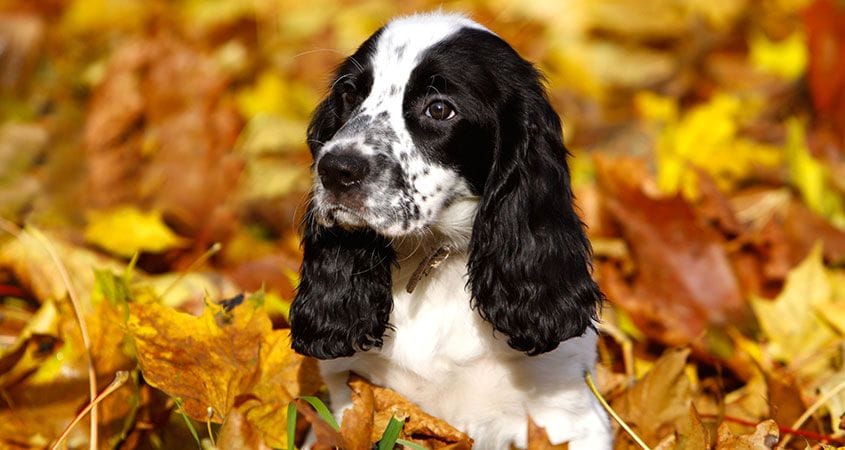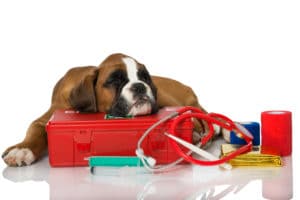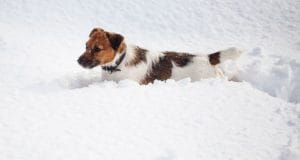Many of us love this time of year — the changing color of the leaves, brisk fall breezes, and finally a respite from the hot weather of Summer. For your dog, however, fall may be more work than fun.
The change in the season can mean a decrease in exercise, and an increase in baths, allergens, and other unpleasantness for your dog. The following tips should help make the transition into the new season enjoyable for both you and your dog.
Health Concerns
Pet lovers may forget about such things as allergens, keeping your dog warm, medical issues, etc., that are associated with the changing temperature. With two of the biggest food holidays coming up — Halloween and Thanksgiving — dogs are in particular danger of food poisoning, choking on bones, or just overeating. Dr. Kerri Marshal, Chief Veterinary Officer at Trupanion, has a few tips to make sure your dog’s health is looked after during the fall season.
Seasonal allergies can kick in for dogs in the fall. These are most commonly skin allergies, but can also be allergic rhinitis, evidenced by sneezing, loud snorting or snoring, and clear discharge from your dog’s nose. Your veterinarian can diagnose and prescribe antihistamines or other therapy to make your dog more comfortable.
As the weather gets cooler, think about putting a coat or sweater on your dog during walks. Make sure it is rain-proof in the wetter parts of the year.
If you use space heaters, be very careful that your dog cannot be burned by them, and does not have access to chew the cord.
Regarding Halloween candy, there’s one simple rule: No! This is especially true of chocolate, which contains ingredients, like theobromine, that are toxic to dogs.
If your arthritis gets worse with colder weather, keep your acetaminophen away from your dog, as it can cause liver damage. The same is true of ibuprofen, which is also highly toxic to dogs. Your dog’s arthritis may act up too. If this is the case, Cesar recommends using a natural supplement to support joint health like Antinol.
Dogs may need slightly more calories in cold weather if they spend time outdoors. Ask your vet to evaluate your pet’s “body condition score” and recommend the proper pet food and amount for active outdoor pets.
Exercise
With the shortened days, it’s very likely that you are going to be walking your dog in the dark, either morning or evening, or both. The best ways to keep you and your pet safe are reflective gear, flashlights, or light-up collars, like the new Bright Light Collar™, which is designed for safely walking your dog at night. The collar is solar powered and USB chargeable, and has two lighting options: a steady or flashing LED light.
Fall also means colder weather, rain, and even snow, which can really make it hard to get outside. In these conditions, you can exercise your dog indoors using a treadmill, or by setting up an indoor “agility” course using households objects, such as clothes baskets, broom handles and furniture. You can then train your dogs to run the obstacle course and work for a treat reward. You can easily alter the course to keep your dog’s mind active and thinking.
While on walks, beware of ice that can cut dog’s paws or make you fall, and “salt” that is put down to melt the ice. While common table salt is frequently used as a chemical deicer, other chemicals which are poisonous to dogs are sometimes used, including ammonium nitrate, propylene glycol, and sodium ferrocyanide.
Try to avoid chemically treated areas, if possible. If you can’t, make sure that your dog does not lick at the ground, using a muzzle if necessary to prevent this behavior. If you need to ice your own drive or walkways, look for pet safe salts, which most pet stores carry seasonally.
These simple tips should help keep your fall fun and fabulous. If you have creative ways of exercising your dog indoors, share with our readers in the comments below.











